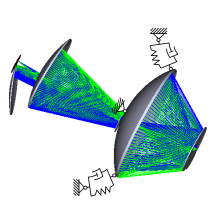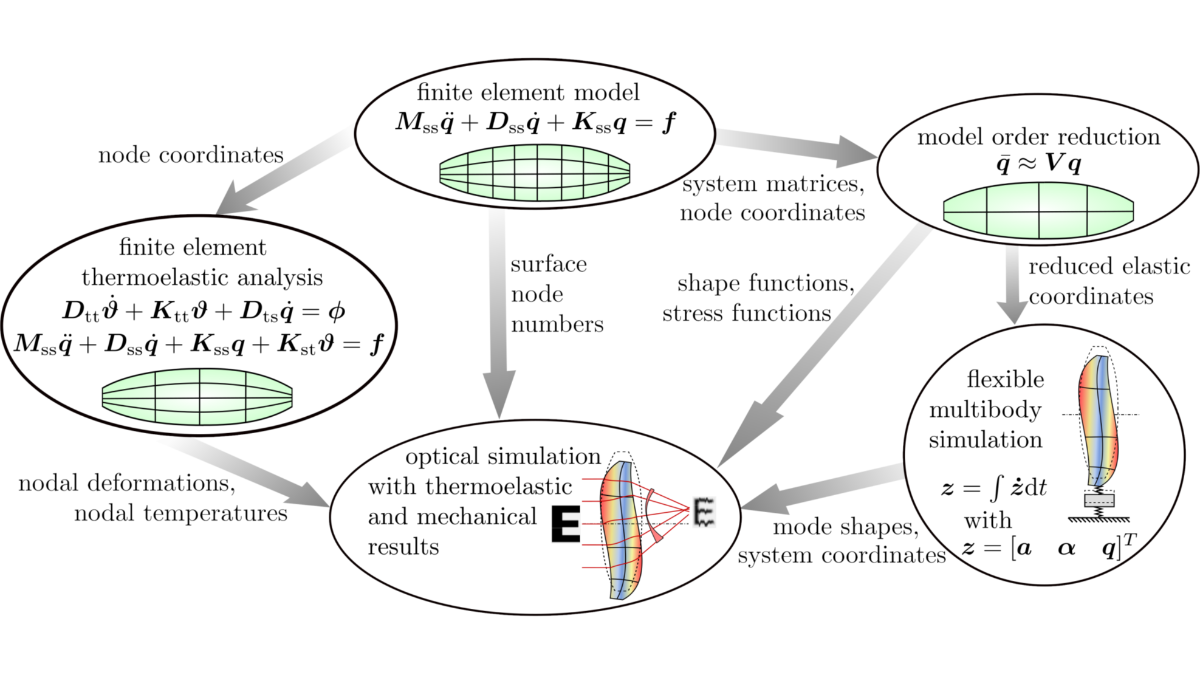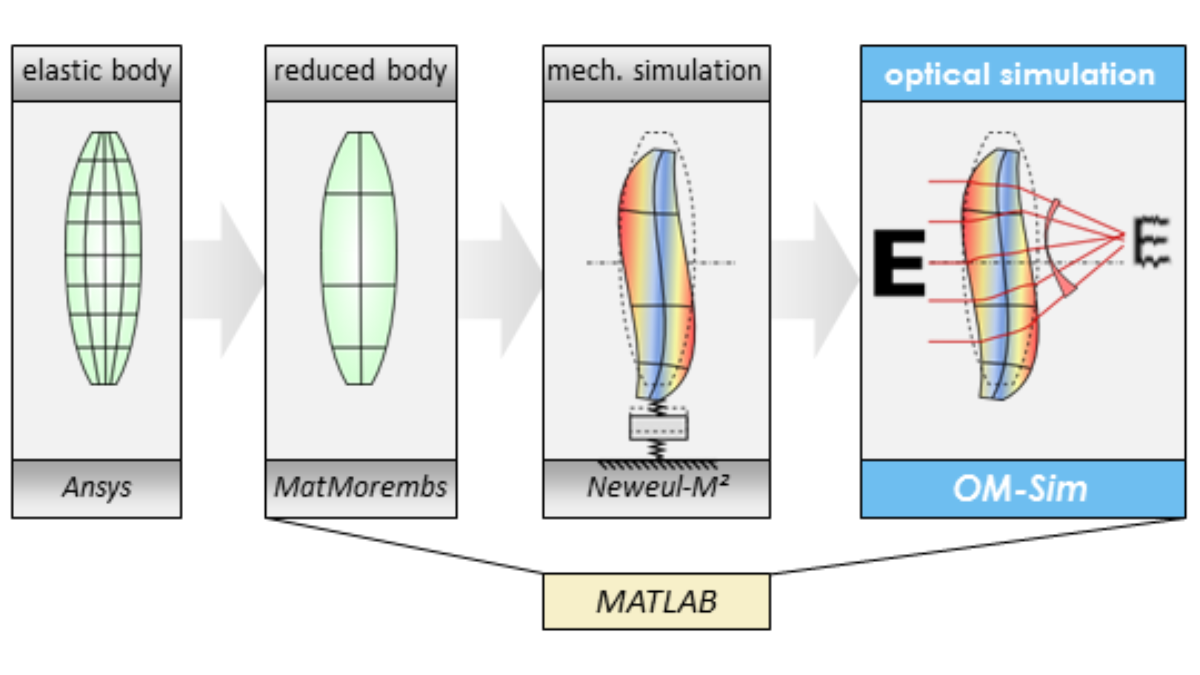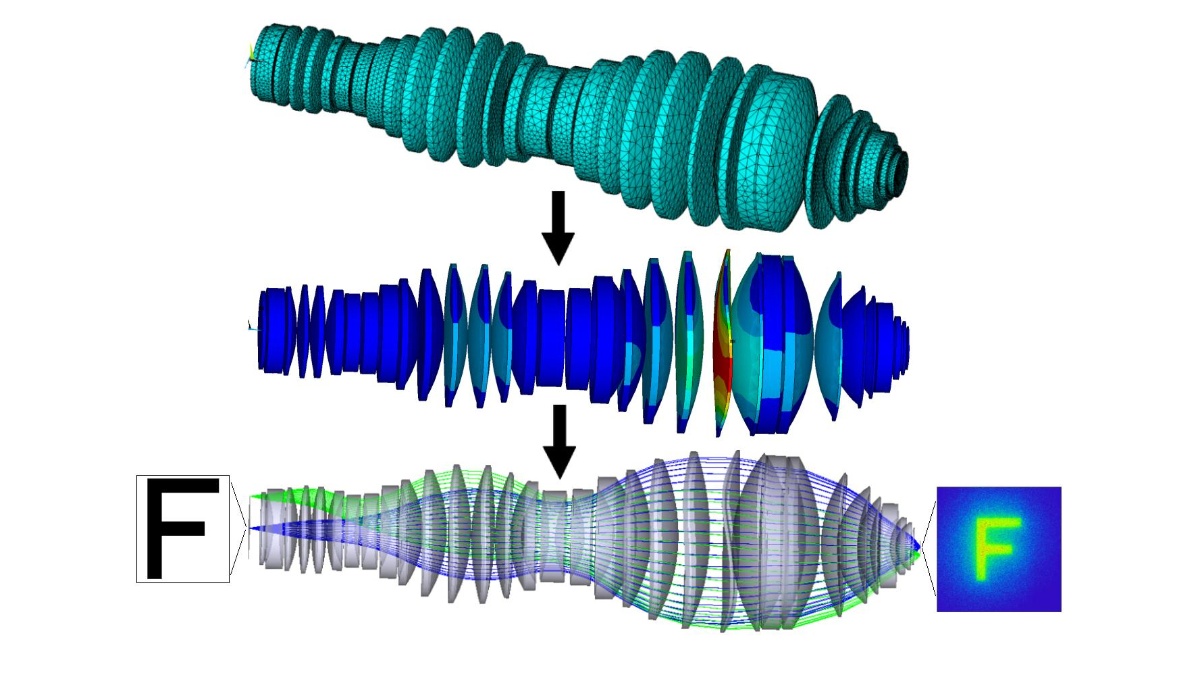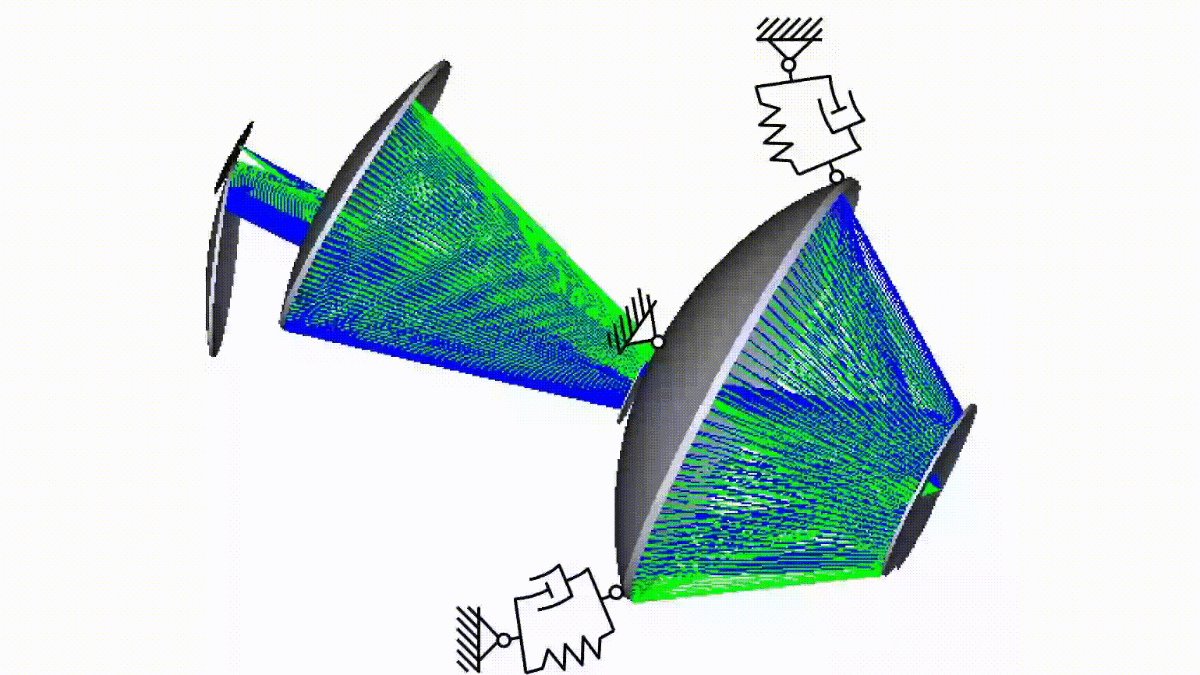Project Description
High Performance Optics are high resoluting optical systems consisting of precise lenses and mirrors which are mounted with a high accuracy. The accuracy is in the range of few nanometers. A good example are lithographic projection lenses for manufactoring semiconductor devices. These objectives require such high accuracies to ensure sharp images at highest resolutions. However, they have a high susceptibility to failures, i.e. small vibrations of the lenses or mirrors can be sufficient to produce defective images. Sources for these small vibrations can be minimal excitations at the objective frame like noise of coolers.
Similar problems are well-known in photography, e.g. when an image is blurred because the camera was moved while pushing the reslease. For a compensation of those movements, many cameras provide optical image stabilizers. For this, sensors measure the camera movement and the optical elements get moved by actuators to fix the image at the image sensor. However, for High Performance Optics, the problem is more complex since movements can hardly be measured and it is difficult to determine causes.
Besides that, thermal disturbances can lead to image aberrations. This can be caused, for example, by a change in ambient temperature to which the optical system must adapt. Alternatively, the increasing energy of the used high-power lasers in optical systems can lead to thermal disturbances by absorption of the light energy within the optical elements
The goal of this project is the development of a simulation environment to detect and avoid weaknesses in the mechanical, the thermal and in the optical design. For the simulation of the dynamics of a lens, the Elastic Multibody Systems (EMKS) method is used. This allows rigid body motions, deformations and mechanical stresses to be considered. Finite element methods (FEM) are used for the thermoelastic simulation. Thus, thermal deformations and the change of the refractive index due to the changed temperatures can be taken into account. The influence of dynamical and thermal disturbances on optical images is investigated by ray tracing. Interfaces between dynamics, thermoelasticity and optics simulations are necessary and have to be transformed appropriately. It is important to make a clear description of the functional chain starting with dynamical excitation and ending with the produced optical result. With this, informations can be obtained for inverse calculations to determine causes for certain image aberrations.
Dynamical-optical Simulation - Examples
Dynamical-thermoelastic-optical system simulation
Results of an transient dynamical-thermoelastic-optical system simulation. The results of the EMBS-simulation, the thermoelastic FE analysis and the geometrical image simulation are shown from the left to the right. From top to bottom, each row shows a later time period with a skipped time period between the rows.
Former employees of the research topic
Dr.-Ing. Luzia Hahn (2018 - 2023) Dr.-Ing. Johannes Störkle (2013-2018) Dr.-Ing. Nicolai Wengert (2010 - 2015)Contact

Mark Kurcsics
M.Sc.
Peter Eberhard
Prof. Dr.-Ing. Prof. E.h.- Profile page
- +49 711 685 66388
- Write e-mail
- Pfaffenwaldring 9, 70569 D-Stuttgart


